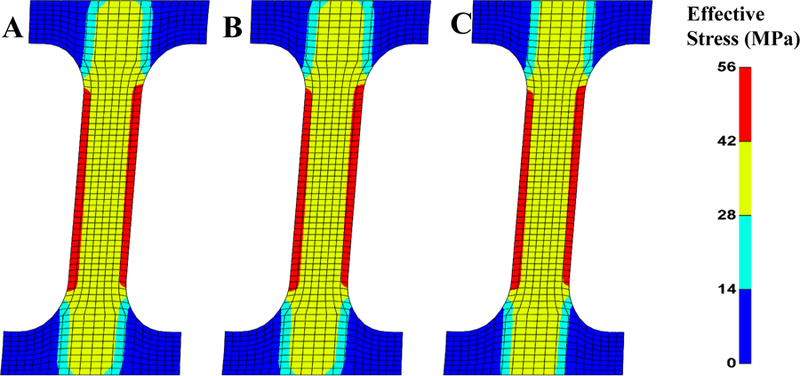Figure 3.

Verification example of the prestrain gradient approach for the case where the prestrain gradient is kinematically compatible. (A) In the forward model, a uniaxial stretch is applied, followed by a shear. The plot shows the effective (von Mises) stress at the end of the analysis. (B) Result for the prestrain analysis where the deformation gradient and nodal coordinates at the end of the uniaxial stretch were taken as the inputs. The prestrain analysis then underwent the same shear step. (C) A similar analysis was performed but using only the fiber stretches instead of the entire deformation gradient from the forward analysis. Again the shear is applied and the effective stress is shown at the end of the shear step.
